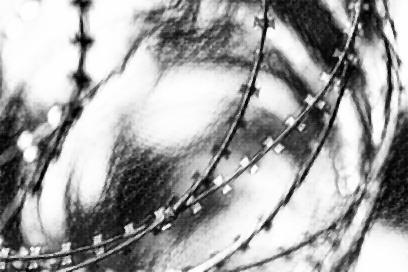It’s become quite clear that widespread corruption within the Virginia Department of Corrections is pervasive and deeply entrenched, with systemic issues, abuse of power, and a culture of hostility all playing significant roles. Addressing these issues requires a concerted effort to root out corruption, strengthen oversight mechanisms, and hold accountable those responsible for misconduct.
Systemic Rot: Corruption within the Virginia Department of Corrections (VADOC) is deeply ingrained within its structures and practices. This corruption involves various forms of misconduct and abuse of power.
Exploitation of Power: The hierarchical nature of this correctional administration and its facilities provides ample opportunity for those in positions of authority to exploit their power. This exploitation can manifest in the mistreatment of inmates, favoritism, and the use of inmates as pawns in power struggles.
Culture of Abuse: In environments where corruption is rampant, a culture of abuse and hostility flourishes. This culture normalizes unethical behavior and discourages whistleblowing or reporting of misconduct.
Lack of Oversight: Without effective oversight mechanisms, corruption thrives unchecked within VADOC. Lack of transparency and accountability allows corrupt practices to go undetected or ignored.
Institutionalized Vindictiveness: In many cases, VADOC exhibits a vindictive attitude towards inmates and their loved ones. This vindictiveness is then used as a tool to maintain control and suppress dissent, further exacerbating the corrupt nature of the system.
External Influences: External factors such as political interference or pressure from special interest groups also contribute to corruption within VADOC. These influences undermine efforts to combat corruption and perpetuates a cycle of misconduct.
Collusion and Cover-ups: Corrupt individuals within VADOC often collude with each other to conceal their misconduct and to protect their interests. This collusion can extend beyond individual staff members to include entire departments or units within the organization. Cover-ups of corruption further erode trust in the institution and hinder efforts to hold wrongdoers accountable.
Fear of Retaliation: In a corrupt environment, whistleblowers or those who speak out against misconduct may face retaliation or threats to their safety. This fear of reprisal can silence potential whistleblowers and perpetuate a culture of secrecy and impunity within VADOC.
Impact on Inmates and Families: The pervasive corruption within VADOC has serious consequences for inmates and their loved ones. In addition to facing mistreatment and abuse, inmates are unfairly disadvantaged in terms of access to resources, legal representation, and opportunities for rehabilitation. Families of inmates may also suffer emotional and financial hardship as a result of corrupt practices within the correctional system.
Undermining Trust and Confidence: Corruption within VADOC undermines public trust and confidence in the criminal justice system as a whole. When those responsible for upholding the law engage in corrupt behavior, it erodes faith in the fairness and integrity of the justice system, leading to disillusionment and skepticism among the general public.
Addressing corruption within VADOC requires comprehensive reform efforts aimed at tackling underlying systemic issues, strengthening accountability mechanisms, and promoting a culture of transparency and ethical conduct. Without meaningful reform, corruption will continue to undermine the mission of VADOC and perpetuate injustice within the correctional system.
In summary, corruption within the Virginia Department of Corrections is pervasive and deeply entrenched, with systemic issues, abuse of power, and a culture of hostility all playing significant roles. Addressing these issues requires a concerted effort to root out corruption, strengthen oversight mechanisms, and hold accountable those responsible for misconduct.
In Solidarity,
Kimberly Zittlow


1 comment :
How can I help?
Post a Comment